"Everything has to go somewhere"
By: Thorsten Overgaard. July 7, 2023.
Today I am talking about preserving and sharing your photographs. In present time you should prepare the photographs you take daily so they can be shared and used, and in that process you should consider how you can preserve them in a condition so they continue to exist, can easily be found, and can be used.
It is a subject I have covered extensively for the last 13 years in my updated Lightroom Survival Kit and Capture One Survival Kit. But today I take it further in that “Everything has to go somewhere” in which I try to answer your occasional thought, “What should I do with my photographs?”.
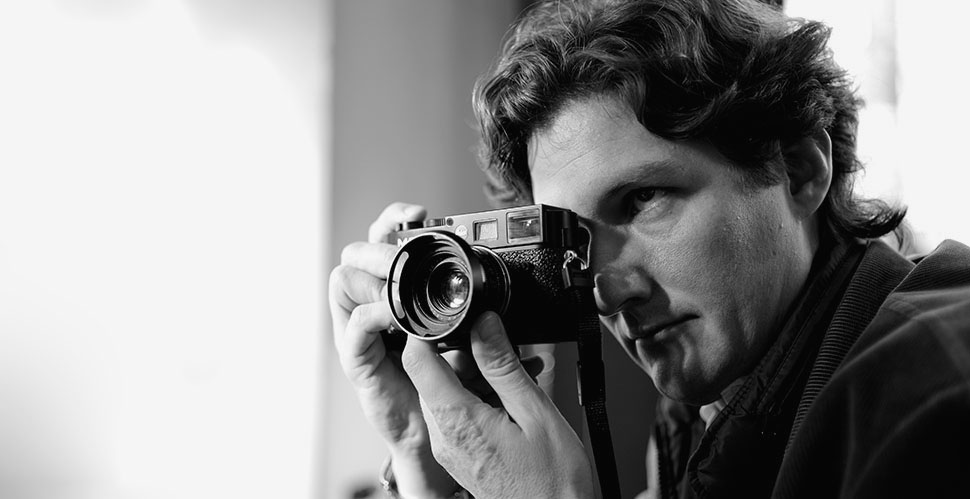
"Everything has to go somewhere". © Thorsten Overgaard.
Having been involved, and still being involved, in two estates, I find that when the creator of something – a house, a car, the material life (and eventually a company or a collection of something) – has left, someone has to step in to continue creating and eventually convert it into monetary value. It is very easily lost, and can even be a burden and a failed purpose for the heirs to see the values falling apart.
While the natural law of nature is to grow, die and be replaced by new life, and a forest always grow larger and wider this way, the forces in economy and “civilization” causes deterioration by inflation, suppression and general incompetence. If you don’t work at it, values lose their value. Opposite nature that survive and flourish, economics deteriorate, which means it is man-made. Inflation is a sign of somebody systematically stealing your values.
Back on track, and in a smaller scale, it means that the idea that you have to pay to keep data is part of an overall system to make you slave to survive.
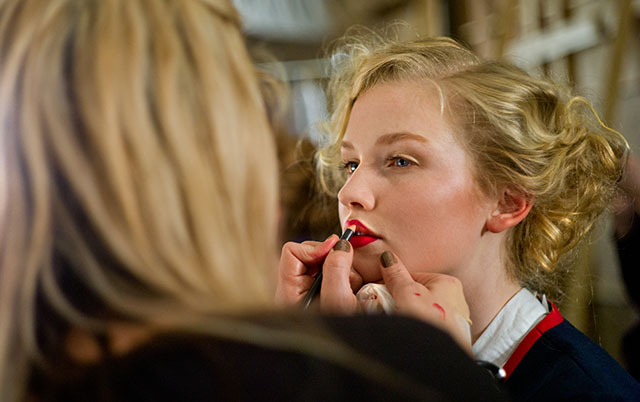
A color version of my now classic and best-selling photograph "Makeup Girl" from 2010. Leica M9 with Leica 50mm Summicron-M f/2.0 II. © Thorsten Overgaard.
As a photographer, no matter if a great and famous one or the family’s photo geek snapping birthdays, holidays and moments of daily life, there is a built-in task of making sure not only that the moments are preserved, but that they are stored in a form so they can be of use and continue to exist.
Your task is to do it in a way so it is a system of persistence that does not require you to constantly garden and water the files (reorganize, update, pay monthly fees) but instead that when you make something, it persists.
Next step is that it goes somewhere, because everything has to go somewhere.
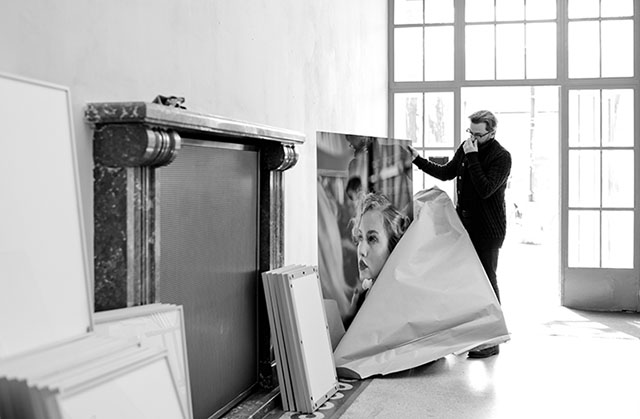
Thorsten Overgaard with the "Makeup Girl" as large print in the Leica Galerie Salzburg.
By having made final images of your good photos, they are ready. By ready I mean ready for sharing, for prints to give away, for images to be submitted to competitions, or simply ready for the family and friends to use when they need them. In today’s photographic world it means not only taking the photos, but also selecting which ones are the good ones, and edit them into “final photos” (the way they should look when used).
This persistence must be built into the system so that any fool unaware of photo editing software, archives etc, can ensure the persistence.
It’s like this: You leave many thousands picture files as an unfinished mess and it requires somebody else to make something out of it. And if nobody does, nobody seem to care and it all will get lost.
Or you organize your photos as you go, by a system so they persist, and it is a valuable contribution to the future because you ensured it exists, and keep existing without any gardening necessary. Society, family and friends can access and use it.
You may sense I am talking a lot about death here, but really what I am talking about is life and how to live forever.
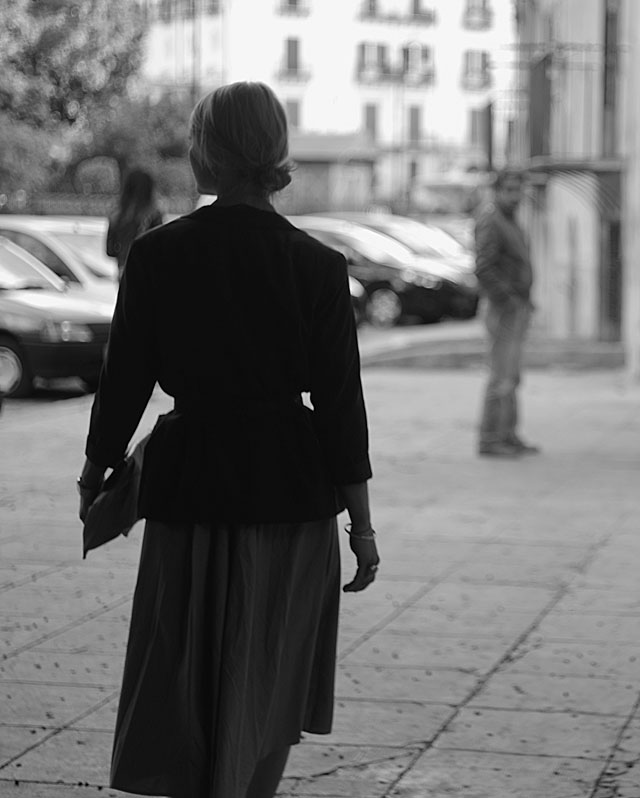
"Dior Lady" from Palermo 2011. Leica M9 with Leica 50mm Summicron-M f/2.0 II.
© Thorsten Overgaard.
The need for an International Archive
I have a vision that one should be able to store one’s pictures in an International Archive. Stored forever and accessible to the public under the conditions one set. Either free to use for all, only visible to a limited group of persons such as one’s family, or for sale per licensing (when someone wants to use a photo, they pay according to the magnitude of the use; size, circulation, period of use).
In my vision I think of IBM or American Express as the one’s providing such a service. Or they promote it, and perhaps best it’s really a self-owned entity. Someone who can benefit from being the father of such a service can ignite it into existence and support it.
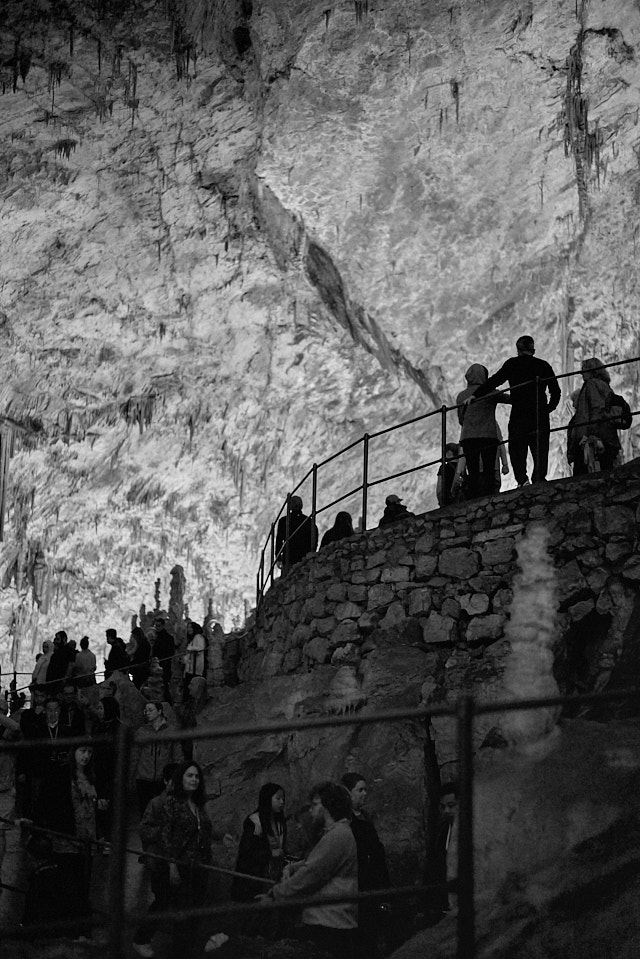
The 16 kiometer long Postojna Caves in Slovenia are 3 million years old. Leica M10-R with Leica 50mm Summilux-M f/1.4. © Thorsten Overgaard.
Amazon has a service called “Amazon Glacier”, which, when I first heard about it, I thought it was forever storage, not able to be deleted. Turned out it is not that concept (but simply a less expensive cloud subscription for data you need to access rarely). If you stop paying, it’s gone, like any other cloud service).
Imagine if Henri Cartier-Bresson, Richard Avedon, Hemingway and Shakespeare had uploaded their works to such a service as an International Archive. Whenever you need a Henri Cartier-Bresson picture, there it is, and if you want to use it, you pay to the owner (who is Henri Cartier-Bresson and his heirs, or to the owner in case they sold the archive rights). Henri Cartier-Bresson pictures would get sold and used to a much higher degree than is the case now, even with a Henri Cartier-Bresson Foundation in existence and The Magnum Photos archive managing his photos.
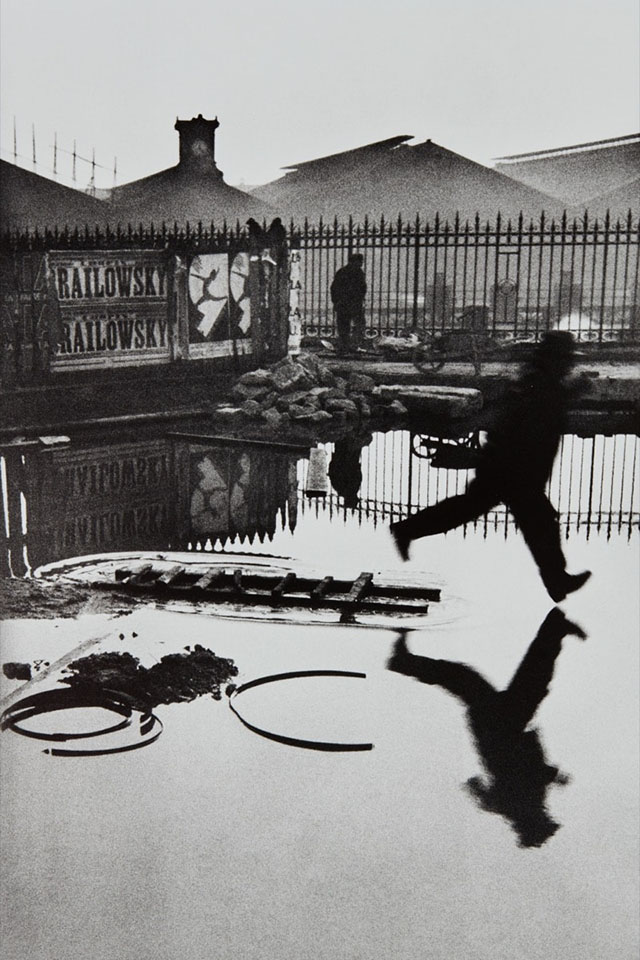
Henri Cartier-Bresson's famous photo "Behind Gare Saint-Lazare" (1932). I have a print of this photo from 1983 when American Express supoorted photography and arranged a photo exhibition of HCB pictures.
Obviously, the owner has to set the rights as well as the prices. It cannot be a business deciding that. Getty Images, the world largest image agency, is a good example of how not to do it: they have as their declared goal to own the majority of photos in the world, and all who benefit from it, is them. The creators, to whom we all owe thanks to that the work came into existence in the first place, does not benefit.
Subsequently, social media and media (newspapers, radio, television and news websites) are used for government propaganda and keeping the population in check.
An “International Archive” is in a sense like a national archive. Just bigger.
Maybe, for us to have confidence in an International Archive, it should be a public service established independently by the European Community. Say, Margrethe Vestager (Executive Vice President of the "European Commission for A Europe Fit for the Digital Age") who initiated and passed through billion-dollar fines against Facebook, Instagram (Meta), Microsoft, Apple, and several other tech giants for breaking privacy laws and fair competition regulations in Europe... she has as her task to ensure the digital future. Maybe some of those resources could and should be directed to establishing and founding an International Archive. (Mrs. Vestager is currently also working on laws to regulate Artificial Intelligence, and let's not go there today, but let me just mention the fact that for AI to construct texts and images, it has to copy content from existing creations made by you and me. Copyright laws already cover that any use of even a minor part of a work has to be paid for – but how to make AI register what it used and pay for it? As it is, AI seems to be happy just stealing and pretending, "I made this myself").
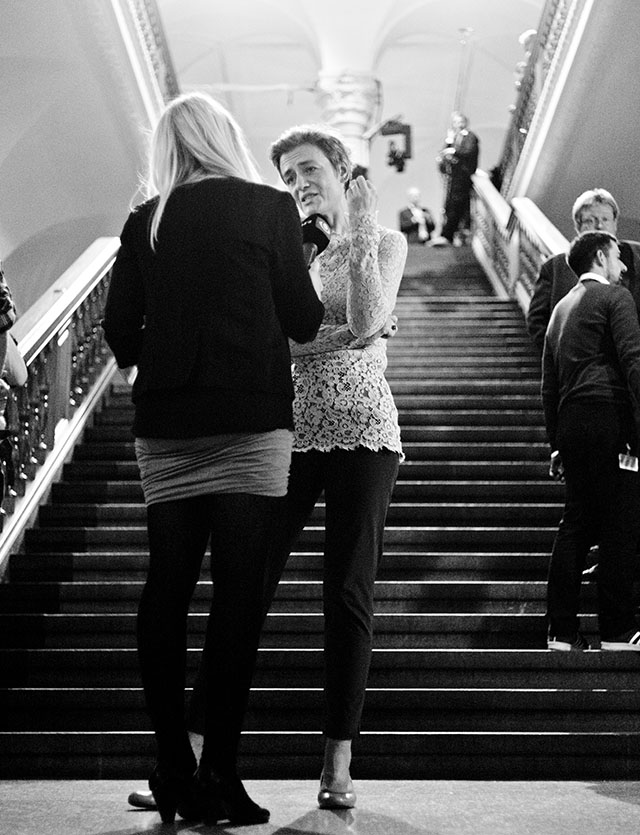
Margrethe Vestager in 2011 (Executive Vice President of the European Commission for "A Europe Fit for the Digital Age" since 2019). Leica M9 with Leica 50mm Summiron-M f/2.0 II. © Thorsten Overgaard.
An international archive also has the potential to be the “real Instagram”, a place to share real photos, not the half-naked popstars and videos of cars crashing, but of real culture and history.
The photo you took of Des Voeux Road in Hong Kong may not get as many views as J.Lo’s butt, but in a way seem more relevant to preserve for the after time.
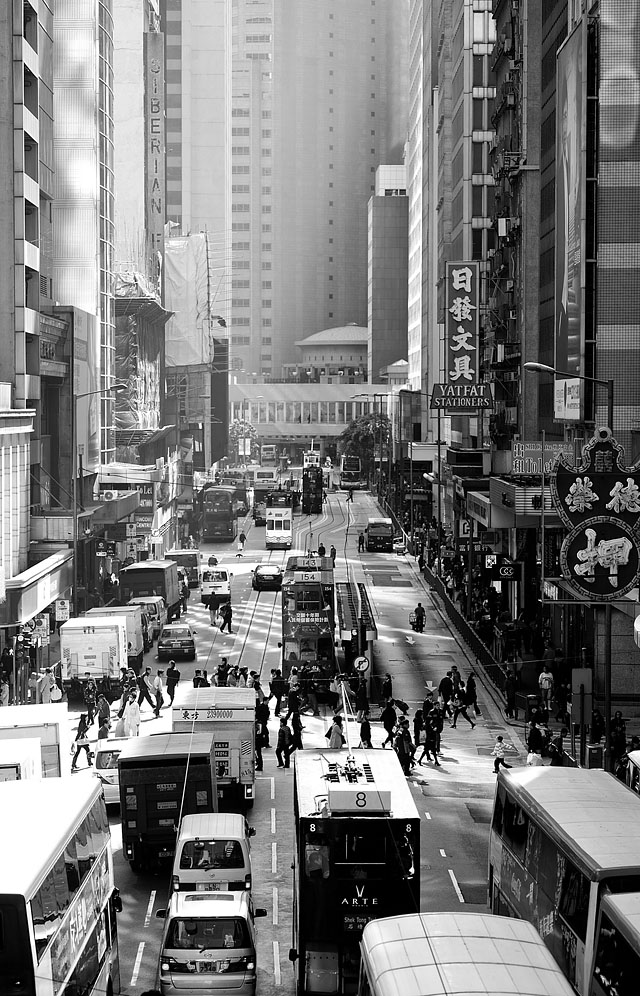
Des Voeux Road in Hong Kong, December 2010. Leica M9 with 90mm Summarit-M f/2.5. © Thorsten Overgaard.
A daily or weekly curated feature of persons, places, notable collections etc. is also a possibility, thus enhancing culture by sharing insight and history – and helping the content go somewhere.
Money is attracted by survival goals, so if an international archive is founded to help survival, sponsorship and business is secured without having to exploit creators (unlike record labels, social media and picture agencies who are all set up to exploit/cut out the creator out and enrich themselves on his or her expense).
The culture is the backbone of future civilization, and clearly, if left to commercial selfish interests of Silicon Valley, the culture deteriorate as quickly as there can be found ways to financially exploit creators and users. Hence the row of people, teens and adults, glued to their screens in any airport, train, restaurant or on the street, producing nothing and learning nothing, while Instagram cashed in on their screen time. It is a business model, and ruthless it is, it is not a culture in development. Man-made inflation of family values, inter-personal relations and the ability to reason and create.
Artists dream the future, and if they are glued to a screen counting likes, the culture will go in whichever way the likes go. Don’t confuse it with democracy or even popular demand, it’s a business model to inflate and exploit and enrich other people for a short while.
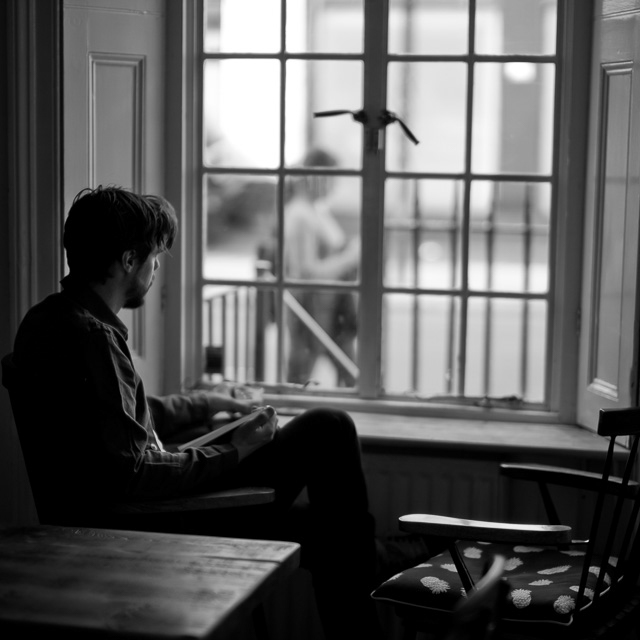
Artists dream the future, and if they are glued to a screen counting likes, the culture will go in whichever way the likes go. Leica M10 with Leica 50mm Noctilux-M ASPH f/0.95. © Thorsten Overgaard
The force of the internet is that everything is accessible and everything can be distributed globally any time of day, supposedly unfiltered.
The weakness is that it’s up to you as the individual to ensure copyright and exchange.
Copyright it the concept that you own your own creations from the moment you make them, not matter their shape, perceived value or completeness (and is as such built into laws and even The Human Rights article 27) and thus copyright must be built into any system.
That creator copyright is not protected by nature, and that it is even possible in Adobe Photoshop to strip a photo of all data about who, where, what and by whom it was created is horrendous. A crime in the making. Ownership of creations should be ensured in the same way as every car has a license plate and every bank account it owned by someone and protected against theft. In the instant you create a photo, a Word document, etc., your unique signature should be part of it and not able to be removed.

A mother walking her baby late night in Los Angeles. Leica M240 with Leica 50mm Summicron-M f/2.0 II. © Thorsten Obergaard.
The weight that lays upon you
However. Having no International Archive yet, and having no secure digital ownership technology, you must ensure this in the way you work.
First step is to realize that nor the technology, nor the will or economy to safeguard your rights and interests exist. All that exist are systems to enrich others by giving you presumed security and presumed convenience.
Clouds make no sense in that massive amounts of energy is used in transferring your creations from you to a data center far away and back to you. For this presumed convenience of “always having your data right at hand” you pay a monthly fee. While the reality is that your data is not at hand (they are in a data center somewhere), and they are as little secured as that you omit to pay for a month (or the world see its first data virus attack), you will have nothing left of what you made.
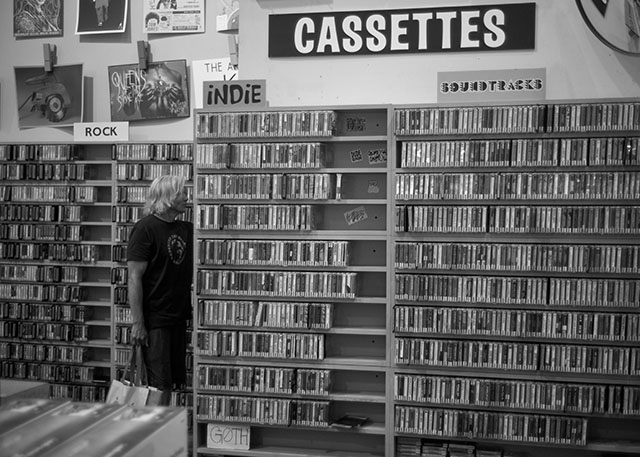
Music on cassettes. Look it up if you don't know what it is. Leica M10 with Leica 35mm Summilux-M AA f/1.4. © Thorsten Overgaard.
How to build your archive so everything can go somewhere
The right thing to do is to store your own data.
Just like you store a piece of paper in a drawer or in a binder where it is safe till you need it, in the same manner you have to save digital files to a hard drive you possess and control the whereabouts of.
Unlike paper and things, digital files are easy to make backup copies of, and the unique thing about digital files is that you can actually have your digital backups in a place so they can survive if fire, theft, earthquakes, wars and digital viruses.
It is all very easy once you understand how to. Whereas the convenience of many systems offered is that you don’t know how or where, and you pay for not knowing. Life is sometimes a cartoon, and the cloud is an excellent example of it.
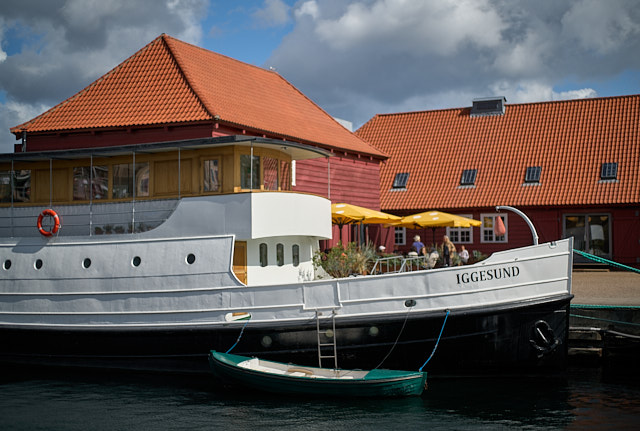
Still standing: 275 year old boathouses in Copenhagen, Denmark renovated and recycled as the "Hart" bakery and cafe, others as living spaces and offices. Leica M11 with Leica 50mm Summilux-M ASPH f/1.4 BC. © Thorsten Overgaard.
Other links:
The Lightroom Survival Kit by Thorsten Overgaard.
The Capture One Survival Kit. by Thorsten Overgaard
Thorsten Overgaard Workflow Masterclass on-line video class that goes over all aspects of workflow, editing, archiving, printing, hardware setup, etc.
Advice for photographers: "Organizing old photo archives"
Advice for photogtraphers: "How to write keywords into your photographs"
"How to migrate from Lightroom Cloud to Lightroom Classic" guide by Thorsten Overgaard.
"How to clean out Apple Photos from the computer and iPhone for photos" guide by Thorsten Overgaard.

Daniel Maclise's painting of Hamlet is from 1842, but the play itself was written over 400 years ago. A fine example of preserving and sharing.
More to come
I hope I started steering you in the right direction today. I am working on more articles and books on how to take control of your creations, how to share them, and how to preserve them. I find it all very easy to do, the main challenge being all the ideas that are promoted to convince you that storing things is a problem and you should pay someone to do it for you.
Think about the International Archive, and as this does not exist yet, think in the direction of making your own international archive – meaning ways to store a secure your final images for future generations and broader use.
Buy and use the Survival Kit
To begin today, buy the Lightroom Survival Kit or the Capture One Survival Kit and start getting your photos and archive in order. , and benefit from a workflow that makes it less painful and more productive. Have more fun with it all, and share with people who care.
Bon voyage with it all. Sign up for the newsletter to stay in the know. As always, feel free to email me with suggestions, questions and ideas. And hope to see you in a workshop one day soon.
/Thorsten Overgaard
PS
The story of the Survival Kit is a fun one. In 2009 and 2010, many people asked if I could do a seminar on my unique workflow and editing trick for color and black & white photos. And so I did a few seminars in Berlin and elsewhere, only to realize that the subject was so painful and boring that nor the students or I liked to do it. We ended up going out to take photographs when it got too much, and we had many great moment of coffee, dinner and talking about our cameras and photography - and avoiding the computers as much as we could.
I decided then to make a do-it-yourself study package that would help you "survive" Adobe Lightroom while it would enable you to learn all you need to know, in a way so it wasn't a pain. And it had to be easy to apply. The result is an industry-standard package and system that many people use. Common sense applied to making photographs.
Since then workflow has evolved. It is not only a question how to get the files into the computer and how to edit them. Software has become more advanced (or complicated), and software houses seem to enjoy moving buttons around, add features and all that in many ways are contraty to what we try to do: Make photographs.
The Capture One Survival Kit was made a few years ago when Adobe started with subscriptions and cloud, which many are opposed to. (The difference between the two is only which software you want to use).
Also, today video tutorials have been added (particularly on black and white photography), and many things has been simplified even futher for you with checklists and very easy how-to steps you can follow so as to survive the comlexities and concentrate on ... making photographs!
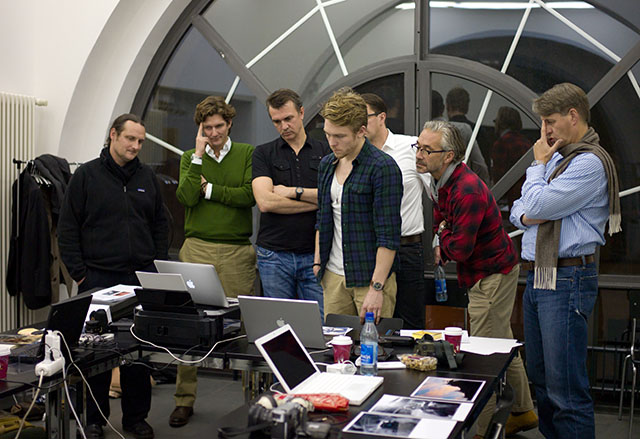
One of the workflow seminars in Berlin in 2010, a refined form of torture prompted by digital photography. Since then the Lightroom Survival Kit or the Capture One Survival Kit have taken its place and made it simple and effective for you to implement industry-standard workflow at your own pace. Buy today. © Thorsten Overgaard.
 |
NEW VERSION 11.3 |
 |
| |
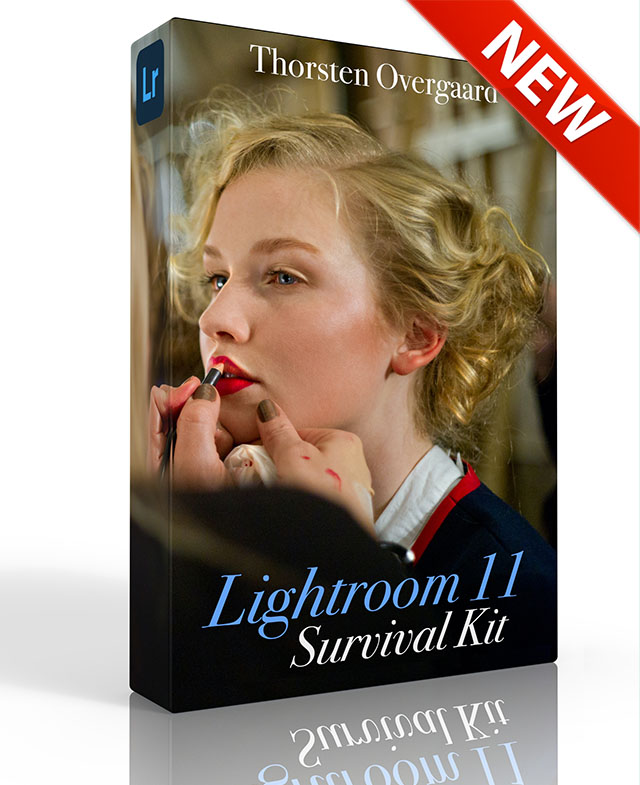 |
|
| |
|
| |
|
|
|
|
| |
|
| |
|
|
| |
Buy Now. Instant delivery.
New Version 11.3
ONLY $698.00

Now includes
4+ hours of
video tutorials.
100% satisfaction
or 100% refund.
More info.
|
|
| |
#2130-1121-3 |
|
| |
|
|
| |
Update to Version 11.3
Apply
code "UPDATE113" on checkout to get this complete version 11.3 update.
$298.00

Updates all previous Surival Kit versions since 2009. |
|
| |
|
|
Buy the complete new
Lightroom Survival Kit 11.3
The Legendary Tutorial for Photographers
Brand-new JUNE 2022-version.
Now with brand-new 4+ hours of video tutorials.
New sections on compostition and storytelling.
How to edit color photos.
How to edit black & white photos.
How to do keywords logical and easy.
The most successful photo editing kit ever
Photographer Thorsten Overgaard first released the Lightroom Survival Kit in 2009 and have honed it with new and fresh updates. This Version 11 is the most radical updated and renewed version ever, four years in the making.
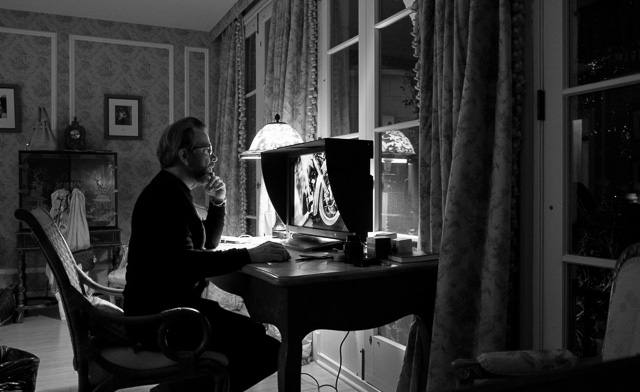
Professional workflow experience made simple, logical and easy to use.
Master editor makes it simple to understand
The Survival Kit is unique and one-of-a-kind being made for photographers for photographers. When someone understands their subject, they can explain it so it is easy to understand. The hallmark of Thorsten Overgaard is to make expert knowledge shown and told in a way so anyone can apply it.
Hands-on advice that works
With a 450 pages workbook and 4+ hours of video, every element of digital photography is touched on, in handy chapters and pre-flight checklists. Editing of color vs black and white photos, keywording, cropping of images, fine-tuning of tones, color balance and color control, export of originals, printing, archiving and backup, and much more.
Comes with the Overgaard Leica Presets (Value $48)
The Lightroom Survival Kit comes with Thorsten Overgaard's special-made Lightroom Presets for all digital cameras and for Leica digital cameras.
Understand all from camera to the final print
Chapters in this version goes over the background for High Dynamic Range (HDR), digital raw files and how to set up a professional photography workflow, from calibrating the screen to editing in Lightroom, and to making a final print. And more ...
10+ years experience in one package
No need to spend years figuring out the smartest way to do things when you can tap into the best way of doing things right here. The workflow of Thorsten Overgaard as been refined through years of field work with more than a thousand workshop attendees.
This method of workflow now used by thousands
The Survival Kit has been taught to thousands in workshops and in this Survival Kit. What does it do? It make you enjoy taking and making photos, and it increases your production considerabely. Most important of all, it'll give you back ownership of your files (which you will understand why is so important, once you have bought the Survival Kit and started applying its methods).
| |
|
|
| |
"Thorsten's methodology is perhaps not what hardware-, software- and cloud-companies want us to do, but as a former IT engineer I can only acknowledge his views about preserving our digital heritage. This workflow explained is for me the best I have ever seen".
★★★★★ |
|
| |
|
|
Video tutorials, image files, presets, checklists, definitions, tutorials of Lightroom, that boils down years of experience to a workflow you can implement in less than one day.
Start working in minutes. |
|
|
| |
|
| |
|
| |
|
| |
|
| |
|
| |
|
|
|
|
 |
|
 |
![]()
